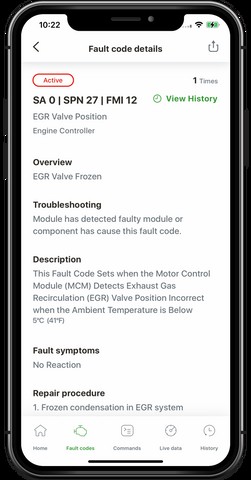Diagnostic trouble codes (DTCs) are a critical part of maintaining and repairing modern heavy-duty trucks. These codes, often presented in the J1939 protocol, provide valuable insights into the health of various vehicle systems. Understanding how to interpret these codes, specifically the Spn Codes Fmi (Suspect Parameter Number and Failure Mode Indicator), is essential for efficient troubleshooting and repair.
A J1939 DTC comprises three key identifiers: SA (Source Address), SPN, and FMI. Together, these elements pinpoint the source and nature of the fault.
Decoding the Source Address (SA)
The SA identifies the originating control module. Common examples include:
- Engine Control Module (ECM): SA 0 (or SA 1/16 for some manufacturers)
- Aftertreatment Control Module (ACM): SA 61
- Body Control Module (BCM): SA 33
- Antilock Braking System (ABS): SA 11
- Transmission Control Module (TCM): SA 3
For instance, SA 0 points to the ECM, while SA 33 signifies a fault within the BCM.
Deciphering SPN Codes: Identifying the Problem Area
The SPN pinpoints the specific component or operating condition causing the fault. SPN 3216, for example, indicates a problem with the Aftertreatment Intake NOx sensor. This is a component-based fault. However, SPNs can also indicate condition-based faults where operating parameters fall outside acceptable ranges.
Understanding FMI: Determining the Failure Mode
FMI clarifies the type of failure detected. This crucial information narrows down the diagnostic process. FMI values can indicate:
- Circuit Issues: FMI 3, 4, 5, or 6 suggest problems within the circuit, such as open circuits, shorts to ground, or low current. These often point to wiring or component failures.
- Component Failures: FMI 12 signifies a faulty component, while FMI 7 indicates a non-responsive or misadjusted component. These FMIs typically require component replacement.
- Data Communication Errors: FMI 9 (abnormal update rate) and FMI 10 (abnormal rate of change) often relate to Controller Area Network (CAN) communication problems. This could indicate a slow or missing response from components like a VGT actuator or EGR valve.
- Operational Range Issues: FMI 0 and FMI 1 indicate data outside the normal operating range. These condition-based failures commonly occur in the aftertreatment system (DPF, EGR, SCR).
- Specific Manufacturer Instructions: FMI 14 indicates a unique fault requiring specific instructions from the manufacturer for proper diagnosis.
- Existing Conditions: FMI 31 signifies an existing condition, such as an empty DEF tank or a derate situation. Often, another code will accompany an FMI 31.
By understanding the meaning behind SPN codes FMI, technicians can quickly diagnose and resolve issues, minimizing downtime and maximizing vehicle efficiency. Proper interpretation of these codes is paramount for effective heavy-duty truck maintenance and repair.
